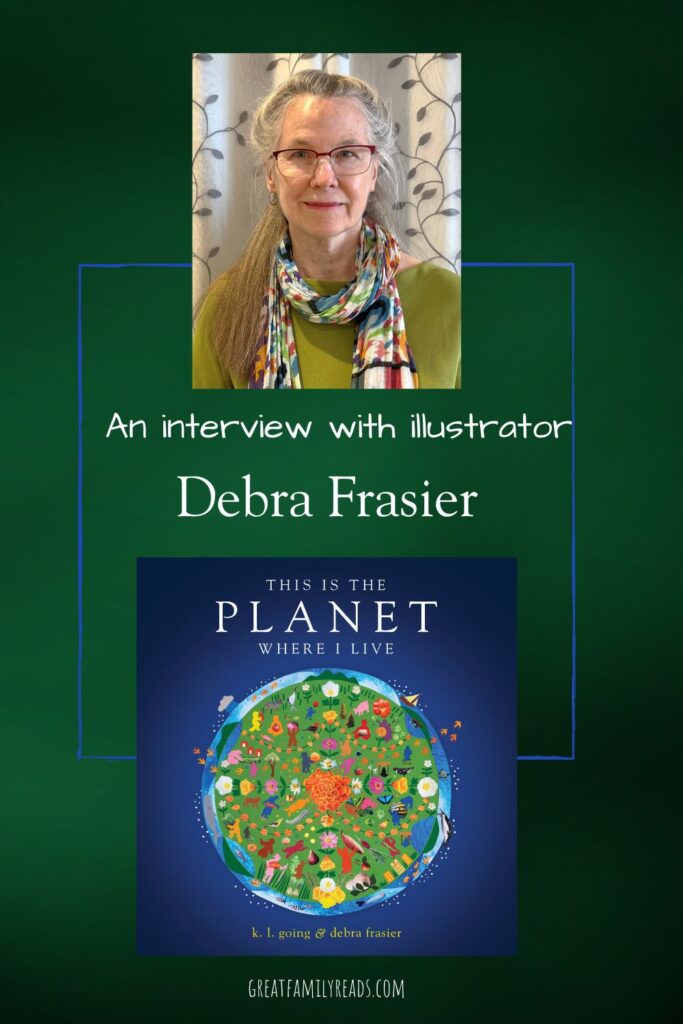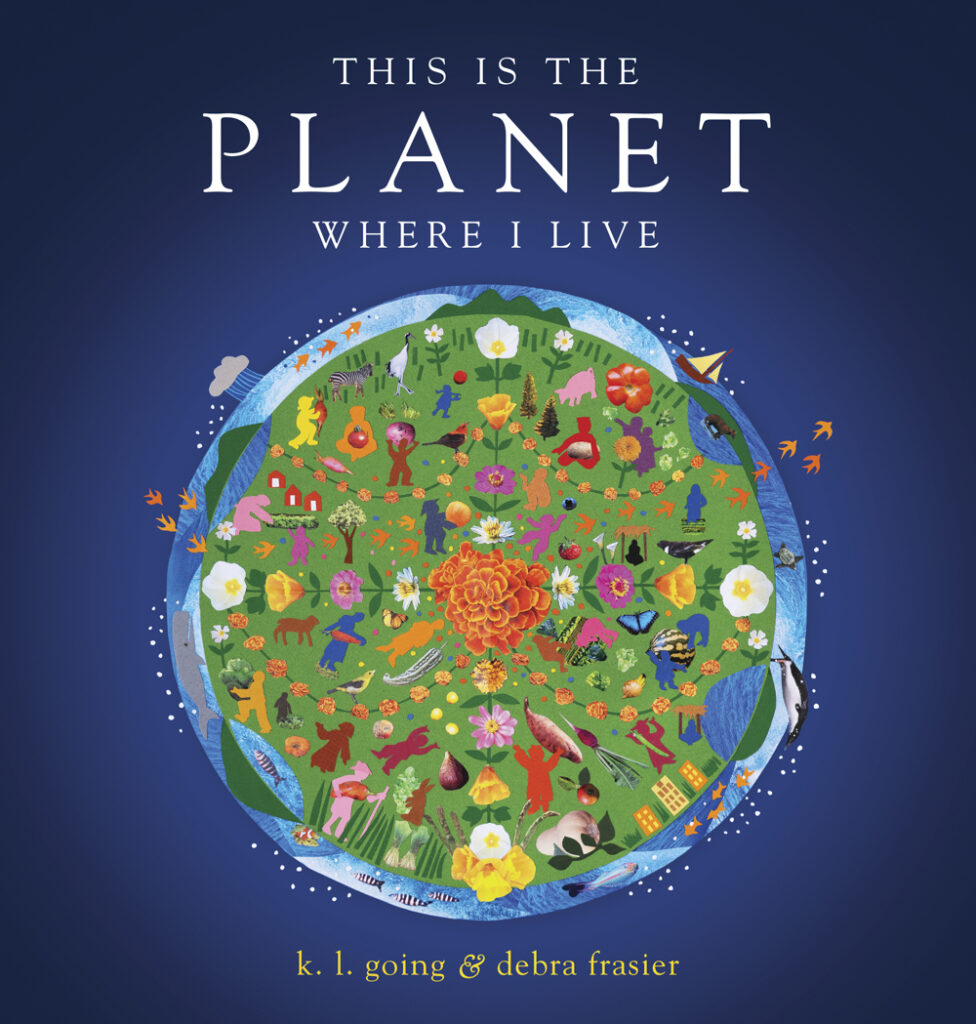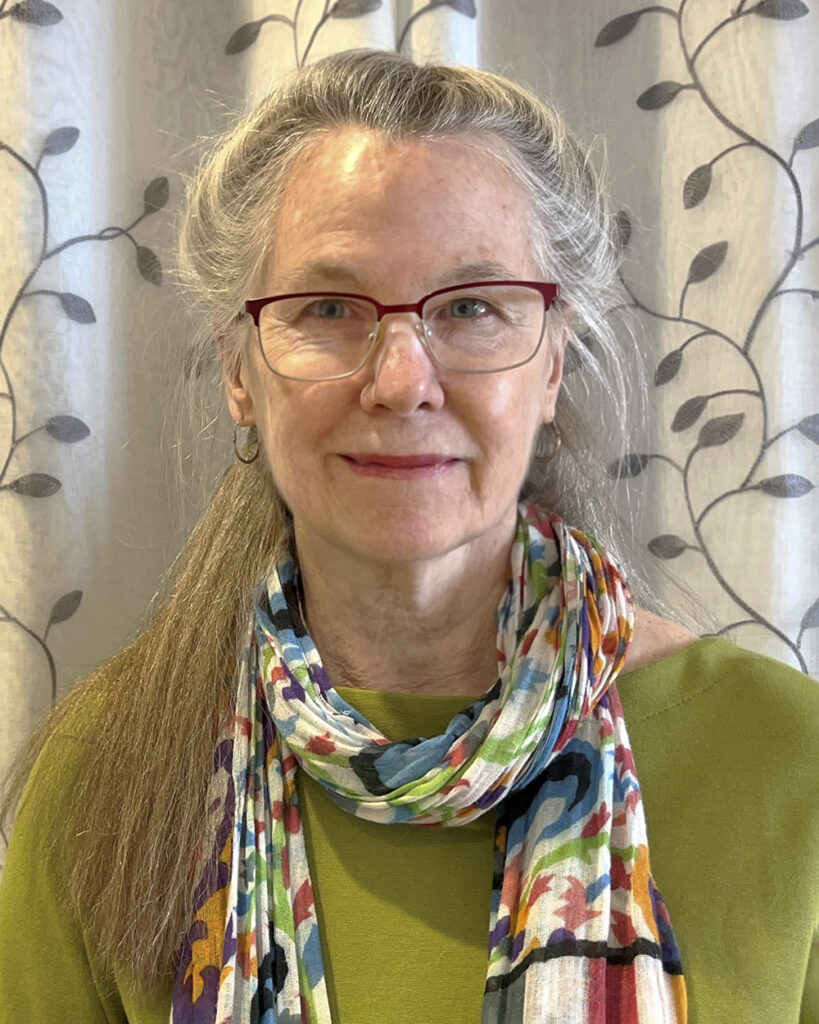In this interview with illustrator Debra Frasier we learn how she became an illustrator and her creative process.
Click to read also: How to Develop a Family Reading Culture

This site features affiliate links, which may earn me a small commission at no cost to you. Learn More
I received review copies of some of these books, but no other compensation and I was not required to review them here. All opinions are my own.
Interview with Illustrator Debra Frasier
What You'll Find on This Page
Debra Frasier’s distinctive cut paper illustration style intrigued me, and thankfully she was happy to answer these interview questions!
I discovered this illustrator through her newest book, This Is the Planet Where I Live, and the questions center around that book.

What inspired you to become an illustrator, and how did you get started in the field?
Before the event-that-changed-all-things I built wind sculptures for cities and museums across the USA. But in 1997 I had a very difficult pregnancy with our one and only daughter.
I was forced to spend a couple of months in the hospital, while fed by an IV. I lost a great deal of weight and my fears were intense.
Eventually, a panic attack led me to scribble little drawings of “things that would welcome this child if they would just get here…” This was more prayer than anything.
Our daughter WAS born healthy and strong. I ended up growing those anxious scribbles into my first picture book, On the Day You Were Born, which I wrote and illustrated.
So my way into making picture books was a bit unusual, but I had loved and collected them as an adult, so maybe it was always there?
Can you tell us a little about your creative process when illustrating a book like This Is the Planet Where I Live? Where do you begin, and how do you develop your ideas?
I have now spent over 30 years creating picture books, most often writing and illustrating.
My illustrations have always been collage, where paper bits become a new whole, though I usually change up the kinds of paper I use depending on the book’s feeling.
I had just come off a four-year project that had NOT been successful so I was a bit battered inside. K.L. Going’s manuscript was stunning, and I had agreed to illustrate it years before. So despite the low confidence, I wanted to try.
I had some lucky things happen: some textiles from Uzbekistan showed up on Instagram that so inspired me; my Tai Chi teachers said something about this being “the place where all things sprout”…
Several other important things were collected in my journal, (which is a bit like my visual stew pot). Quite literally, an entirely new “stew” came out, beginning with the discovery of the Rainbow People!
What was your favorite part of working on This Is the Planet Where I Live, and why?
On this project I trusted the path more than I usually do.. By that I mean that I did not have a crisp drawn plan (or “dummy”, we call it, or a “practice book”).
I literally did not know what the next picture would look like as I was working on the one before.
Over time, I became more comfortable. I even found that I really liked “not knowing” where I was going.
I developed some trust that the project would lead the way, if I would let it happen… this is a bit hard to explain.
While I would not recommend this for all projects, for this one the book did seem to have a mind of its own…
Can you talk a bit about the importance of illustrations in children’s books, and how you approach creating images that will resonate with young readers?
Visual language IS the young person’s language and it is a thrill to get to converse with a native speaker!
My strongest skill with this language is speaking in what I might call “visual concepts”.
I like taking big ideas like “global shelter” or “fields, everywhere”—the kinds of concepts This Is the Planet Where I Live asks to be described, and visually unlocking the puzzle.
How do we show the peoples of the world in one image? How do we show the fields of the globe? Or maybe a better question is—what is the growing force that is the constant, world over? Can that be a picture? This is the arena I was trying to learn enough about to be able to picture it, conceptually, for This Is the Planet Where I Live.

In This Is the Planet Where I Live, you use a cut paper technique that includes magazine clippings to create your illustrations. Can you discuss why you chose this approach?
When my Tai Chi teacher actually said, “…this is the planet where things sprout…” I sat up in my mind!
I saw the Earth’s growing force as the foundation of the book: how could I create evidence of growth? Plants! Flowers!
I started collecting elements and separating them by colors into small boxes. It was like having boxes of paint to use to build something new. And then, of course, the “spiral” came to my rescue, the unfurling green energy!
What advice do you have for aspiring illustrators who are just starting out in their careers?
Make things you love. Take online classes with people you want to learn from. Work with materials you love.
Make a “collecting journal” where the things that make you “sit up in your mind” gather, and will somehow stir into new stew. (This journal space is essential.)
Make things you love. Work with materials you love.
Make things you love. Work with materials you love…
Look at picture books that inspire you. Ask why?
Make things you love…this list could go on for a long long long long time…
How do you stay inspired and motivated as an artist? Where do you look for new ideas and inspiration?
All of the things that I listed above for the “new to the field” to do IS WHAT I STILL DO NOW, thirty-plus years later!
Making a picture book has to do with curiosity, with forming your essential questions, and then finding out ways to pursue those questions.
One of my long held questions is “What can endpapers do to set up and welcome the reader, and then usher them back to the world?”
I constantly explore this question by paying close attention to the first lift of the cover on any picture book I open.
This is the action that becomes the portal to the book’s world.
How can this be brought into a conscious moment, be more than just the impatient blank page behind the cover?
Then there are other questions that come from a theme like, say, “Rootedness”. I love everything about this word, this concept. There are pages in the journal for thinking about this…
Are there any upcoming projects or collaborations that you’re particularly excited about,? Can you give us a sneak peek at what’s next for you as an illustrator?
I have some things that are brewing in the journal. But I am unbearably slow and the beginnings are so tiny they would seem foolish strutting about on the lighted stage just now…Let’s check back later.
Finally, what message do you hope young readers will take away from This Is the Planet Where I Live. How do you think your illustrations help convey that message?
I am hoping that, when a reader comes to the back pages where the sunflower Sun is setting across the endpapers and the book closes to the Moon rising in the back cover’s corner, I hope this final refrain rings across the days ahead… “all on the planet where we live.”
It’s that WE I’d like for our readers to carry onward. All on the planet were we live…That’s what I hope we’ve offered here.
Learn More About Author-Illustrator Debra Frasier

Although this interview focused on her illustration, Debra Frasier has also written a series of picture books (that she also illustrated). Visit her website and more about her through these resources:
Thank you, Debra Frasier, for this wonderful interview! I love hearing about your process, how your got into illustration, and how you approached illustrating This Is The Planet Where I Live.
Share your book recommendations on my Facebook page! Find daily recommendations on great family reads by following me on Instagram.
